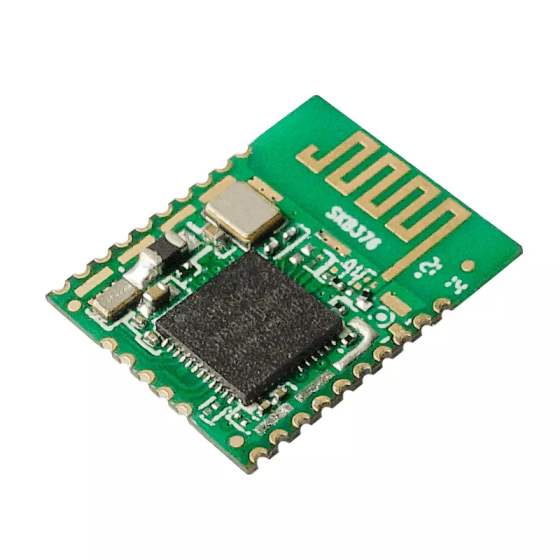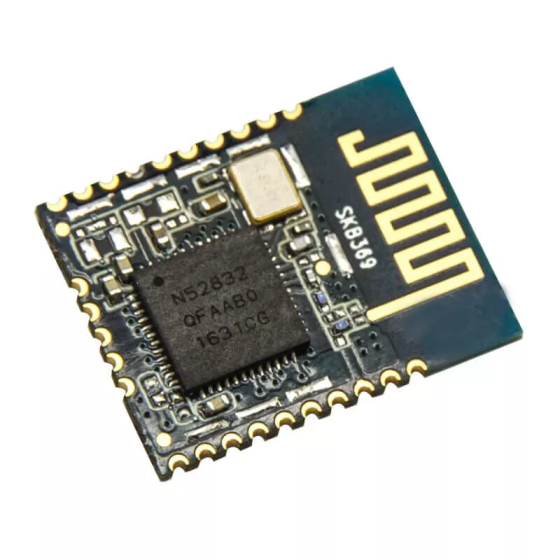In this article, we will try to analyze the features of bluetooth master slave module in the simplest possible language, as well as options for its practical application. Let's check its power consumption in various modes, as well as delays.

In fact, when it comes to Bluetooth, we cannot deny its convenience in all fields, you must have heard of the concept of BLE or low energy Bluetooth. So what is BLE and how is its practical application, let's find out.
Bluetooth master slave module is another wireless technology standard developed to exchange data between devices over a short range without wires.
Bluetooth operates in the 2400-2483.5 MHz band in the 2.4 GHz ISM band. Data divides into packets and exchanged through one of 79 designated Bluetooth channels (1MHz each).
Bluetooth Low Energy (BLE) – Translation: Bluetooth low energy – is a wireless networking technology that consumes very little energy use to connect devices together over longer distances.
Bluetooth master slave module is not seen as an upgrade of regular Bluetooth, it is a new technology that focuses on IoT – devices with little data to transmit at low speeds. It can be understood as a form of smart Bluetooth for smart devices.
Previously, when developing various devices, we use regular Bluetooth. In fact, regular Bluetooth is a wireless UART. That is, we have a stream of received data and a stream of sent data.
Plus, in ease of development, commands or information receive via UART, then simple parsing takes place.
But what if you need to connect not two, but three or more devices? This is where BLE comes to the rescue.
The downside is that by default, the transfer is all the time. The most popular bluetooth master slave module transmitter type HC-05, HC-06 consumes tens of milliamps constantly in this mode, if you do not take measures to turn off the module, turn it on, or establish a connection yourself.
But what if, for example, the second device wants to send a message about some kind of event, and the second module is sleeping?
Then the second bluetooth master slave module will receive this message only when it wakes up. But what if we want to have very low power consumption on the one hand, and on the other hand be in working mode only when there is some kind of data transfer?
In BLE, the module consumes only during data transmission, the rest of the time it is in deep sleep. Thanks to this, energy consumption can significantly reduce.
However, the more often you plan to transfer data, the greater the power consumption will be. And with very frequent data transfer, the energy efficiency of BLE will not differ much from conventional Bluetooth.
Bluetooth master slave module also allows you to connect to multiple devices at once. If classic Bluetooth supports Point-to-Point topology, then BLE supports Broadcast and Mesh Network.
Mesh network - Devices connect to each other. That is, there are several devices on the network and each has several connections.
GATT is a specification for sending and receiving short pieces of data (attributes), it defines the data hierarchy, that is, the rules by which devices exchange messages.
Each bluetooth master slave module device has a profile. It can have 1 or more services, a service must have at least one characteristic. A feature must always have at least two attributes: a feature declaration and a feature value.
I prefer to use the names CENTRAL (Central) and PERIPHERAL (Peripheral), we will use them further.
The central device scans Advertising packets, and the peripheral device sends them. After the central device finds the desired peripheral device, they switch to the data channel.
In bluetooth master slave module, 3 channels use for transmission for Advertising packets and 37 channels for data transmission.
In addition, such a poll requires two-way communication, so first we send a request for reading, and then we receive a response
Many people may wonder what the difference between Notify and Indicate property is. In fact, both perform the same notification function. The difference between a notification and a read is that you do not need to make a request to read the value from the device every time.
You get the value asynchronously, in fact, and do not waste energy on unnecessary requests.

As a rule, this mode uses when you need to find out that the device has updated data (for example, a reading from a temperature sensor has occurred). Also, if the data updates are aperiodic, then periodic polling would be a waste of energy.
Bluetooth master slave module notification is a one-way type of communication, so there is savings on data transfer time, as well as on power consumption. However, Notify is a transmission without acknowledgment; it is an unreliable data transmission channel.
But what if you want to have; on the one hand, asynchronous data transfer without unnecessary device polls, and also have reliable data transfer with confirmation?
This is where Indicate comes to the rescue. Here it is necessary that the client sends an acknowledgment of receipt. However, such reliability requires more transmission time.
The measurement was taken for an indicate transfer. As mentioned above, this is an asynchronous data transfer with confirmation.
The countdown began from the moment the indicate function calls on the Peripheral device and ended when the callback call about changing the characteristic on the peripheral device and reading it on the Central device.
The delay range was from 5 to 50 Ms. this must be taken into account in devices that tie to real time. The average BLE latency was approximately 10ms. The standard deviation was not considered.
Slave module power consumption
With infrequent data transfers, you can achieve average power consumption, measured in micro amps, but with frequent data transfers, power consumption will reach tens of milliamps.
Copyrights© Shenzhen Skylab Co.,LTD All Rights Reserved.

